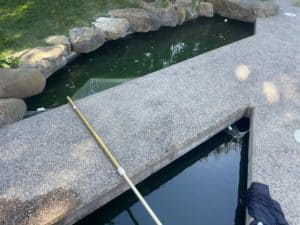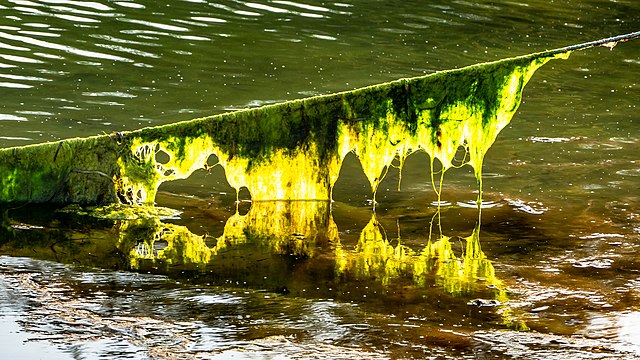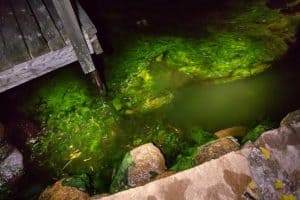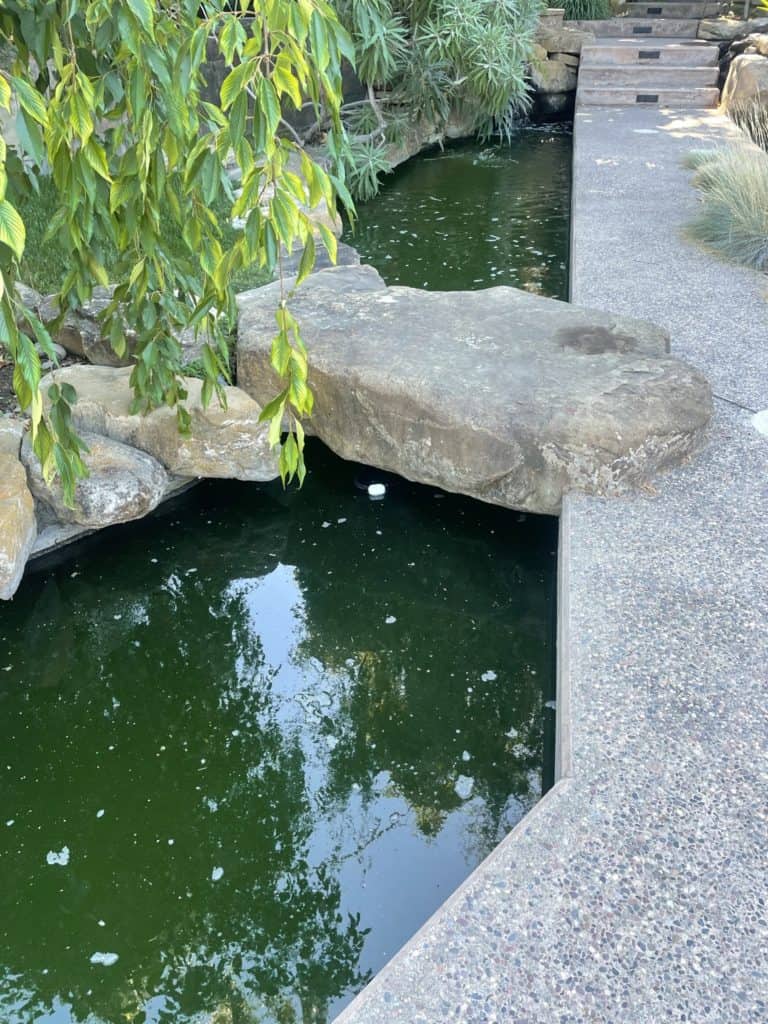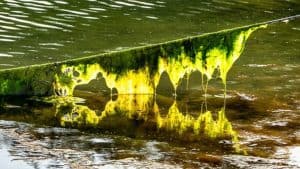** Post contains affiliate links.**
When you mix fish with water and sunlight, algae is pretty much guaranteed. Most of the issues with algae is that humans don’t like to look at it, not its impact on fish health. Learn how to remove algae from pond without harming fish with some quick and easy steps.
Step 1: Identify your type of algae
There are three main types of algae in fish ponds: cellular, string and matted.
- Cellular/green algae looks like pea soup.
- String algae looks like long green hair.
- Matted algae looks similar to string, but in dense, spongy mats.
Step 2: How to Remove Algae from Pond
Please complete step 1 before proceeding! There are very different approaches to algae removal depending on what type is present in your pond!
WARNING: DO NOT just dump in a bunch of algaecide! This can cause serious problems for your fish and will only temporarily alleviate your problem!
How to Remove Green Algae from Pond
The best method to remove green algae is a UV light. This will zap the algae in suspension continuously and not harm your fish in any way. When you first turn it on, your pond will go from green to brown or grey. This is cause by the dead algae in suspension. You can add a sieve filter or some dense filter material to help remove the dead algae faster, but it will settle out over time. Do NOT use pond “clarifiers” that may clump your fishes’ gills together as well as the algae. You will need to replace your UV bulb once a year for proper function.
How to Remove String Algae from Pond
You’re not going to like this answer, but grab a rake! Yes, the best way to remove string algae is manual removal. Be sure to use a plastic one if you have a rubber lining to your pond. Concrete lining? You can pull out a heavier duty metal rake. It is recommended to combine this with a UV bulb and barley straw to prevent string algae from getting worse.
How to Remove Matted Algae from Pond
Sorry, folks, but same as above, grab a rake. Manual removal is your best bet with this type of algae as well. Not your bag? Call a reliable maintenance company or drop the neighbor kid $20.
Step 3: Prevent Algae in Your Pond
Now that the algae is gone, how to we prevent it from coming back?
Keep your Nitrates and Phosphates in Check
The best method to curbing your algae problem is to cut off their food source. Phosphates usually ride in with your source water and there’s not much to be done about them. Nitrates are the final stage of your nitrogen cycle, so it you’re feeding your fish a lot or a high protein diet, you could be elevating your nitrates. Here is more information on what to feed your koi to make sure you aren’t making your algae issue worse. And no matter what the protein in their diet, the amount of food you feed could be contributing. Learn how to feed your koi here.
Limit your Pond’s Sunlight
Lots of sun equals lots of algae. If possible, add a sun sail or umbrella around the sides of your pond to limit your pond’s access to light. This will also help stabilize your pond’s temperature and prevent UV damage to your fish.
Support Your Fish During Algae Blooms
Have a lot of algae in your pond? Your fish may be at risk of lack of oxygen and pH shifts. During the daylight, algae performs photosynthesis and produces lots of oxygen. But at night, algae will switch to cellular respiration, and use oxygen to produce carbon dioxide. At high concentrations, your algae may use up all your oxygen and leave none for your fish! This is especially important if your filtration does not run 24/7. If your kH isn’t high enough, high carbon dioxide levels can cause a downward shift in pH, resulting in a pH crash, which can also hurt your fish.
If you cannot run your filtration overnight, it is critical to provide your fish with additional oxygen, such as through an aerator. This will provide enough oxygen for all and help offset any carbon dioxide build up.
